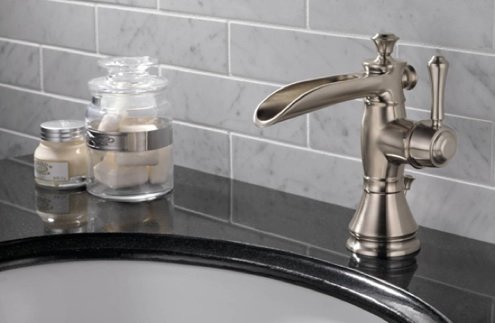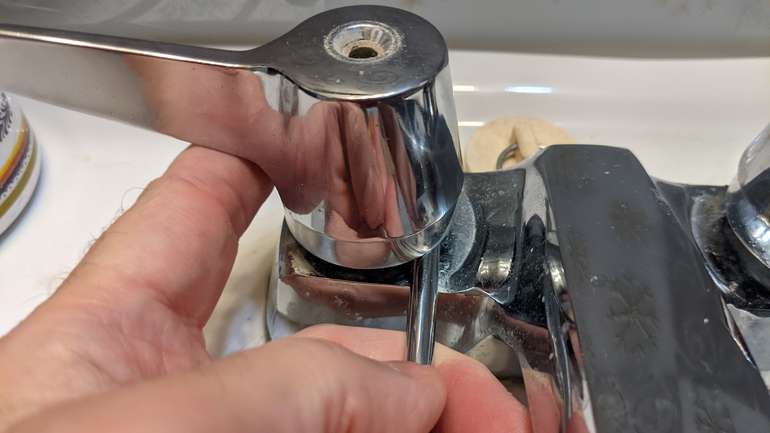Are you currently looking for information and facts concerning What Causes Leaky Faucets & How To Fix Them?

Leaking faucets may feel like a minor trouble, yet their influence exceeds simply the nuisance of the noise. From drainage to sustaining unneeded financial expenses and wellness risks, disregarding a dripping tap can cause various effects. In this short article, we'll explore why it's crucial to resolve this common home issue promptly and successfully.
Wastage of Water
Environmental Influence
Trickling taps contribute substantially to water waste. According to the Epa (EPA), a solitary tap dripping at one drip per second can squander greater than 3,000 gallons of water annually. This not just stress water resources yet also influences ecological communities and wildlife dependent on them.
Step-by-Step Guide to Repairing a Dripping Tap
Devices Required
Before trying to repair a trickling tap, collect the essential tools, consisting of an adjustable wrench, screwdrivers, replacement components (such as washers or cartridges), and plumber's tape.
Usual Faucet Issues and Their Solutions
Identify the kind of tap and the specific issue causing the drip. Usual issues include damaged washing machines, rusty shutoff seats, or faulty O-rings. Refer to producer instructions or online tutorials for detailed guidance on repair services.
Financial Prices
Raised Water Costs
Beyond the environmental influence, trickling faucets can pump up water bills considerably. The built up wastefulness with time converts into higher energy expenses, which might have been prevented with prompt repair services.
Potential Home Damages
Additionally, extended dripping can result in harm to fixtures and surfaces bordering the faucet. Water accumulation can create discoloration, rust, and even architectural problems if left ignored, resulting in added fixing expenses.
Wellness Worries
Mold and Mold Growth
The consistent existence of moisture from a trickling faucet creates a perfect setting for mold and mildew growth. These fungis not only jeopardize indoor air high quality however additionally position wellness risks, especially for people with respiratory problems or allergies.
Waterborne Conditions
Stationary water in dripping faucets can end up being a breeding place for germs and various other virus, increasing the danger of waterborne illness. Pollutants such as Legionella microorganisms grow in stationary water, possibly leading to serious illnesses when ingested or inhaled.
DIY vs. Professional Repair
Benefits and drawbacks of Do It Yourself Repair
While some may attempt to fix a dripping faucet themselves, DIY repair work include their own set of challenges. Without correct expertise and devices, do it yourself efforts can intensify the problem or result in incomplete repairs, lengthening the issue.
Benefits of Employing a Specialist Plumber
Hiring an expert plumber makes certain that the underlying source of the leaking faucet is attended to properly. Plumbers possess the competence and tools to diagnose and repair tap issues successfully, saving time and lessening the danger of further damages.
Environmental Duty
Private Payment to Conservation
Taking obligation for dealing with dripping taps lines up with more comprehensive initiatives toward water conservation and environmental sustainability. Every person's actions collectively make a significant influence on preserving precious sources.
Lasting Living Practices
By focusing on prompt repairs and taking on water-saving routines, people add to sustainable living methods that benefit both present and future generations.
Safety nets
Normal Upkeep Tips
To stop leaking faucets, carry out routine upkeep such as cleaning aerators, examining for leaks, and replacing worn-out parts without delay. Additionally, think about installing water-saving gadgets or updating to much more reliable fixtures.
Relevance of Prompt Services
Dealing with trickling taps as quickly as they're observed stops more water wastefulness and possible damages, inevitably conserving both water and cash in the long run.
Impact on Residential Property Worth
Assumption of Well-Maintained Residential Property
Keeping a property in good condition, consisting of resolving upkeep concerns like trickling taps, boosts its viewed value and value among potential buyers or renters.
Impact on Resale Worth
Characteristics with well-kept plumbing components, consisting of taps, command higher resale values in the real estate market. Dealing with trickling taps can contribute to a positive impression during home examinations and negotiations.
Conclusion
Resolving a dripping tap surpasses plain convenience; it's an essential step towards saving water, decreasing financial costs, and safeguarding health and property. Whether via do it yourself fixings or expert support, taking action to deal with trickling faucets is a little yet impactful means to advertise liable stewardship of sources and add to a much healthier, more sustainable future.
How to Fix a Leaky Faucet: Step-by-Step Repair Guide
A leaky faucet may seem like a simple annoyance, but if it's not fixed promptly, that leak could cost hundreds to potentially thousands. From water damage to mold, mildew, and high water bills, even a tiny leak can be catastrophic if left unattended. Damage like this can even affect the overall value of your home, so it's important to take the right approach for leaky faucet repair. You may need the help of a plumber in some cases, but we've got a few tips you can try on how to fix a leaky faucet before calling the pros.
Four Faucet Types
When you're learning how to fix a leaky faucet, the first step is knowing what kind of faucet you're working with! There are four common types.
Cartridge Faucets
Cartridge faucets come in one- or two-handled varieties. In one-handled cartridge faucets, hot and cold water combines in a single cartridge. In the two-handled versions, hot and cold water are controlled separately and mixed in the faucet.
Ball Faucets
Ball faucets have a single lever you push up and down to adjust the pressure and rotate to change the temperature. A slotted metal ball controls the amount of water allowed into the spout.
Compression Washer Faucets
They're the oldest type of faucet, but they're still used in many homes — especially older ones. Compression faucets have two separate handles that, when turned, raise or lower the washer that seals a water valve. This valve stops water from flowing through the faucet when it is turned off.
Disc Faucets
Disc faucets rarely need to be repaired due to their maintenance-free design. The water flow is controlled by two discs — the upper one raises and lowers against a fixed lower disc, creating a watertight seal. If your disc faucet starts leaking, you may need to replace the seals or clean residue buildup from the inlets.
Fixing a Leaky Faucet
Step 1: Turn Off the Water
Whether you're learning how to fix a leaky bathtub faucet or how to fix a leaky kitchen faucet, always turn off the water supply to your working area when you're fixing a leak. The last thing you want is a flood added to your list of things to fix.
Look for the shutoff valves below your sink or around the tub and turn them clockwise to stop the water flow. If your faucet doesn't have shutoff valves, you may need to turn off the water for the whole house. Check to make sure it's off by turning the faucet on. If nothing comes out, you're ready to start the repair.
Step 2: Take Apart the Faucet
How you disassemble your faucet depends on the type of fixture you have. You can use a flathead screwdriver to remove the caps on top of the handle or handles for cartridge and compression faucets. Inside, you should see handle screws. Unscrew these with a screwdriver to remove the handle.
Disc- and ball-style faucets will typically have an inlet screw near the handle, and removing that will reveal the interior of the faucet.
Detach the Valve Stem
For cartridge- and compression-style faucets, you'll see the inner valve stem or cartridge once you remove the faucet handles. If you have a compression faucet, unscrew the brass valve stem. If you have a cartridge faucet, pull out the cartridge. If your cartridge has been in place for a while, it may require some tools or extra force to remove it due to mineral deposits.
Examine and Replace Parts
Once you've removed the parts, check them out to confirm what needs to be replaced. You may see corroded rubber washers, O-rings, stems, or cartridges. On a ball-style faucet, check the seats and springs for damage.
If you need to repair a leaky disc faucet, check the inlet and seals on the lower disc.
Once you determine what parts must be replaced, visit your local hardware store. Bring the damaged parts with you to ensure you can purchase the correct components to replace them.
Clean Valves and Faucet Cavity
If you've removed a stem or cartridge, you may notice mineral buildup in the faucet's threads. Use white vinegar to clean the valve seat by soaking it for a few minutes, then scrub it away with a soft toothbrush and rinse with warm water. You can also clean the interior of the faucet in the same way.
Reassemble the Faucet
Once your faucet is cleaned and the required parts have been replaced, it's time to reassemble it. Put the pieces back together and slowly turn the water supply back on. Doing this slowly is crucial because too much initial water pressure can damage the new hardware you've just installed.
https://homewarranty.firstam.com/blog/how-to-fix-leaky-faucet

We had been introduced to that report about What Causes Leaky Faucets & How To Fix Them through a buddy on another web page. If you liked our blog post if you please remember to share it. Thank you for your time. Don't forget to stop by our site back soon.